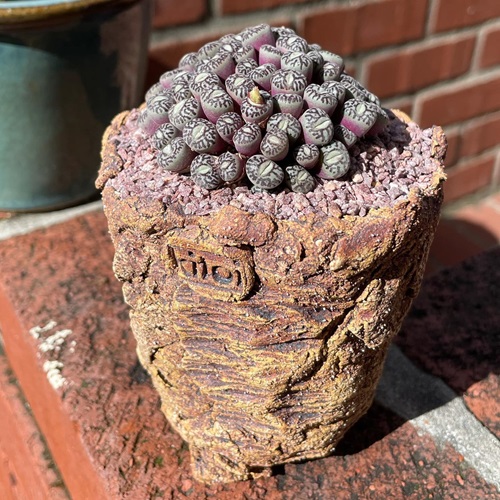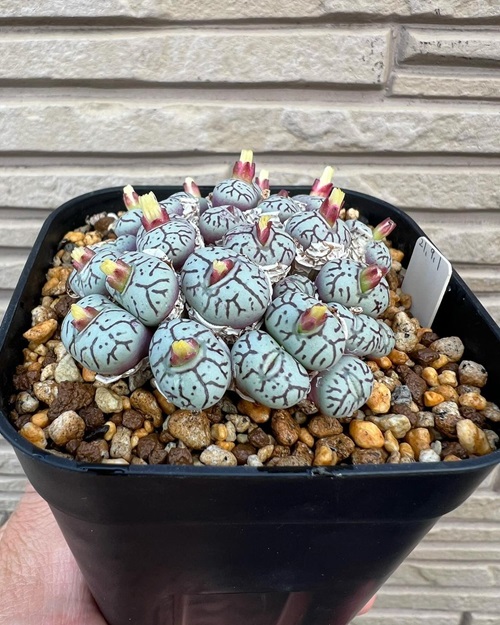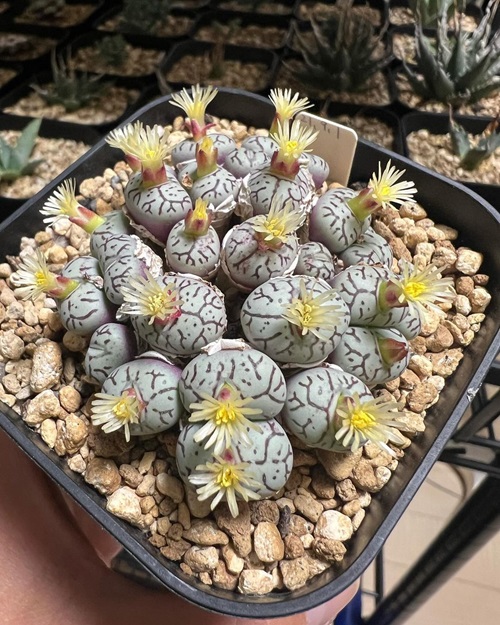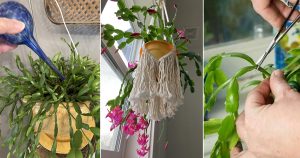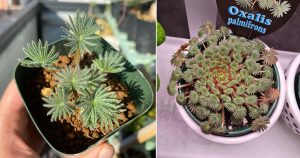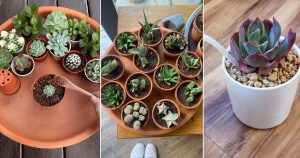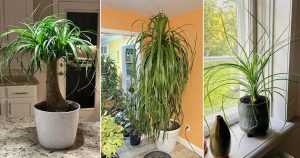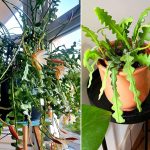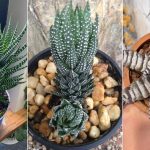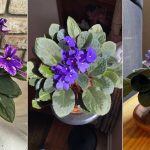Did you know that you can grow Conophytum wittebergense as “Living Pebbles” in your rock garden? Let’s learn how and where!
Curiosity never ends while exploring nature—in this case, this plant is the specimen! You can not ignore this plant if you pass by it someday! Conophytum wittebergense is a rare succulent that is best for landscape gardening or rock garden decors! Let’s talk about it in detail.
Conophytum wittebergense – Key Facts
| Common Name | Button Plant, Living Stones, Lithops, Living Pebbles |
| Scientific Name | Conophytum minimum or Conophytum wittebergense |
| USDA Zones | 10-11 |
| Origin | Witteberg Mountains of South Africa |
| Sunlight | Partial Sunlight |
| Watering | After the top layer of the soil drys up completely |
| Soil Type | Loose soil with well drainage |
| Propagation | Through offsets or seeds |
| Fertilizer | Optional or organic fertilizers |
| Danger of Pests | Very minimal |
Conophytum wittebergense Plant Information
Button Plants, Lithops, or Living Pebbles! Which one do you like to call them? As a matter of fact, the Conophytum genus has a collection of so many odd or weird-looking plants one can never imagine! These plants have all kinds of resemblances, like eyes, pebbles, lips or butts, and many more.
Living stones hail from Witteberg mountains, Western Cape of South Africa at 800-1100 meter altitudes above sea level. Conophytum wittebergense look like pebbles when they are young and gradually develop dark black spots and patterns all over transforming to look like small heads on the ground or sometimes like lots of hypnotizing eyes! Funny, yet true!
These small succulents can form loose mats or domes, with round or oval bodies covered in red streaks or spots. Each plant has two thick, fleshy leaves that are almost fused together in the middle. Their fragrant flowers bloom from the center in white, pale yellow, or pink, eventually producing small seed capsules.
Note: It’s important to know that these plants are toxic if ingested, so keep them away from pets and children.
Conophytum wittebergense Pot Size
A Living Pebble ‘pup’ can only grow up to 3 cm in diameter, so when it comes to determining a pot size for this plant then it simply depends on your choice. Moreover, they expand from their sides where new pups emerge in a tight cluster. So, you can start by planting them in a small pot first and gradually repot them when the pot is filled up with the ‘pups’.
Propagating Conophytum wittebergense
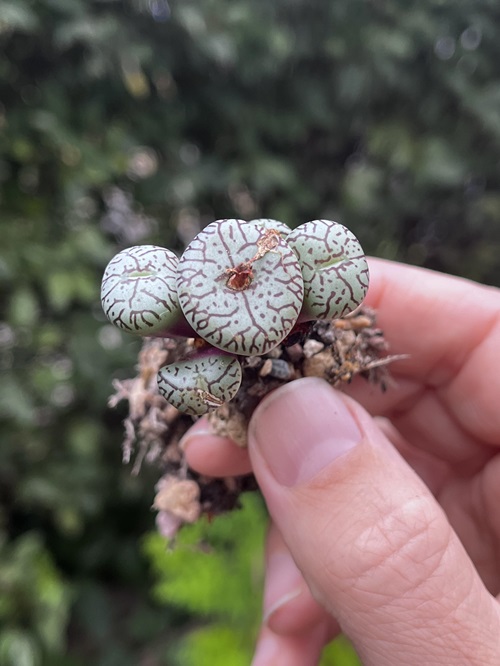
Offsets
The Conophytum succulents grow or expand by forming small offsets from the sides. These offsets or ‘pups’ tend to form tight clusters around their surroundings. So, the fastest way to propagate these succulents is by offsets. Very carefully, remove the offsets with a clean hand trowel and plant it in your choice of pot or spot.
Seeds
After the flowers bloom, small hardy fruits appear on Conophytum wittebergense. These hard fruits contain many small seeds which can be used to propagate. Prepare a medium-sized pot or a ground area with loose sandy soil, coco peat, and perlite for aeration. Sprinkle water on the prepared soil and then plant the seeds up to 2-5 cm deep and place them in a bright area with partial sunlight. The seeds will germinate after 2-3 weeks.
Requirements for Growing Conophytum wittebergense
Sunlight
Conophytums thrive in bright, indirect sunlight. A few hours of morning or evening sunlight is best rather than full sun exposure, as it may scorch the leaves.
Watering
Living Pebbles have adapted to survive in dry conditions. So, watering should be done only when the top layer of the soil dries out to prevent root rot and damage to the plant.
Soil
As these succulents are adapted to grow in high altitudes and slopes they require well-draining soil for healthy growth and development. To prepare a soil mixture suitable for this, a succulent potting soil with perlite or pumice is ideal.
Temperature and Humidity
Conophytums can tolerate a wide range of temperatures ranging from hot summers to cool winters. However, it is necessary to protect them from winter frosts and scorching direct sunlight.
This is hardy in USDA zones 10-11 and naturally grows in limited areas. If you want to grow them from seeds or by dividing the plants, you’ll need to copy their natural habitat for the best results.
Conophytum wittebergense Plant Care
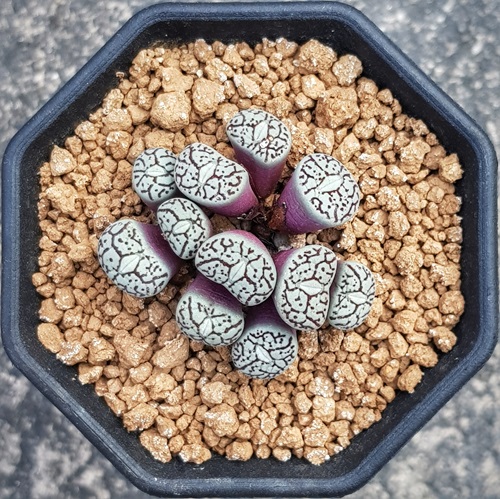
Fertilizer
A simple succulent soil mixture with stones or perlite is enough for this one. If required, you can add some cocopeat, dried husk, and other organic fertilizers into your soil mixture for a year.
Pruning
As the pattern of growth and propagation of these succulents, pruning is not necessary on a frequent time interval. However, if your pot is filling with pups then you can propagate them in new pots for new plants.
Pests and Diseases
However, they are very little observed to be infested. But in humid conditions, pests like mealybugs or aphids may infest these succulents so, a timely check on them during the rainy humid seasons. And if any infestation is there then neem oil spray or any other organic pesticide spray will work well for them.
So, are you ready to grow living pebbles in your garden? If yes, why don’t you share your ideas and experience with us as well in the comments? We would love to know more!

